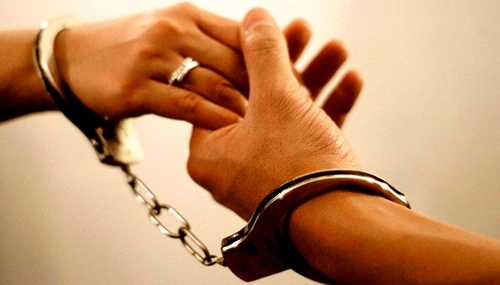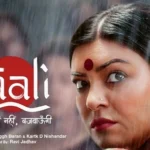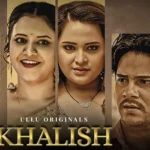Marriage in India is traditionally considered a sacred bond, but it must be entered into voluntarily by both parties. Forced marriage, where one or both individuals are coerced into marrying against their will, is a violation of personal liberty and dignity. Indian law explicitly prohibits forced marriages and provides remedies and penalties to safeguard individuals from such practices.
This article explores the legal framework addressing forced marriage in India and highlights the rights and remedies available to victims.
1. Legal Definition of Forced Marriage

A forced marriage is one where:
- Consent is obtained through coercion, threats, or undue influence.
- One or both parties are not of legal marriageable age.
- Consent is not free and voluntary as required by law.
2. The Legal Framework Prohibiting Forced Marriage
Several laws in India address the issue of forced marriage:
a. The Indian Penal Code (IPC), 1860
The IPC contains provisions to penalize acts of coercion and threats used to force someone into marriage:
- Section 366: Criminalizes the abduction, kidnapping, or coercion of a woman for marriage against her will.
- Punishment: Imprisonment of up to 10 years and a fine.
- Section 498A: Addresses cruelty by a husband or his relatives, which may include coercing a woman into marriage.
- Punishment: Imprisonment of up to three years and a fine.
b. The Prohibition of Child Marriage Act, 2006
This act specifically prohibits forced marriages involving minors:
- Provisions:
- A marriage involving individuals below the legal age (18 for women, 21 for men) is deemed voidable.
- Forced child marriages are considered illegal, and individuals facilitating such marriages can be penalized.
- Punishment: Rigorous imprisonment of up to two years and a fine of up to ₹1,00,000.
- Protection for Victims:
- Victims can seek annulment of the marriage.
- Special Child Marriage Prohibition Officers are appointed to prevent and report such incidents.
c. The Protection of Women from Domestic Violence Act, 2005
Forced marriage is recognized as a form of domestic violence under this act:
- Victims can seek protection orders, residence orders, and compensation.
- It allows individuals to file complaints against coercion by family members.
d. The Special Marriage Act, 1954
This act governs interfaith or civil marriages and emphasizes free consent:
- Marriages under this act require a public notice and registration, reducing the risk of forced or fraudulent marriages.
- Lack of free consent renders the marriage void.
e. The Hindu Marriage Act, 1955
Under this act:
- Section 5: Requires free and voluntary consent for a valid Hindu marriage.
- Section 12: A marriage can be annulled if consent was obtained through fraud or force.
3. Consent and Marriage Laws in India
Free and informed consent is central to all Indian marriage laws:
- Consent must be given without fear, coercion, or undue influence.
- The absence of free consent makes the marriage invalid or voidable, depending on the circumstances.
4. Remedies for Victims of Forced Marriage
Victims of forced marriage have several legal remedies available:
a. Filing an FIR
- Victims can report the offense to the local police under IPC sections 366 or 498A.
b. Annulment of Marriage
- Under laws like the Hindu Marriage Act or Prohibition of Child Marriage Act, victims can seek annulment if the marriage was forced or fraudulent.
c. Protection Orders
- Victims can approach courts under the Domestic Violence Act for protection against further coercion or harassment.
d. Seeking Shelter and Counseling
- Many NGOs and government-run shelter homes provide safety and counseling to victims.
e. Child Marriage Prohibition Officers
- These officers can intervene in child marriage cases, stop the ceremony, and provide legal assistance to victims.
5. Penalties for Forced Marriage
The penalties for individuals involved in facilitating or forcing a marriage include:
- Under IPC Section 366: Up to 10 years of imprisonment and a fine.
- Under the Prohibition of Child Marriage Act: Up to 2 years of imprisonment and a fine of ₹1,00,000.
- Under Section 498A (IPC): Up to 3 years of imprisonment and a fine for cruelty related to forced marriage.
6. Role of Authorities
To combat forced marriages, authorities play a critical role:
- Police: Act on complaints and register FIRs under relevant sections.
- Child Marriage Prohibition Officers: Actively monitor and prevent child marriages.
- Judiciary: Provide timely relief to victims through annulments, protection orders, and penalties.
7. Challenges in Combating Forced Marriage
Despite robust laws, challenges persist:
- Lack of Awareness: Many victims and their families are unaware of their rights and legal remedies.
- Cultural Norms: In some regions, forced marriages are culturally accepted or seen as family obligations.
- Fear of Retaliation: Victims often fear retaliation from family members or the community.
- Delayed Enforcement: Bureaucratic delays can hinder timely intervention.
8. Steps to Prevent Forced Marriages
To effectively prevent forced marriages:
- Awareness Campaigns: Educate individuals about the importance of free consent and the legal consequences of forced marriage.
- Community Engagement: Encourage local leaders and NGOs to address cultural practices that perpetuate forced marriages.
- Helplines: Promote helplines like 181 (Women Helpline) or 1098 (Childline) for reporting forced marriages.
- Strong Enforcement: Strengthen the role of law enforcement and ensure timely intervention.
Conclusion
Forced marriage is a violation of fundamental rights, including the right to liberty and personal dignity. Indian laws provide robust safeguards to prevent such practices, but effective implementation, societal change, and victim support are crucial. By fostering awareness and empowering individuals, India can ensure that marriage remains a free and voluntary union, free from coercion and fear.
Hina Abbasi is Editor and a passionate sports and entertainment content writer at WinnersMaze.com. Hina’s expertise spans across a wide range of sports, and interest in many TV shows allowing her to deliver insightful analysis and compelling stories that resonate with readers.

